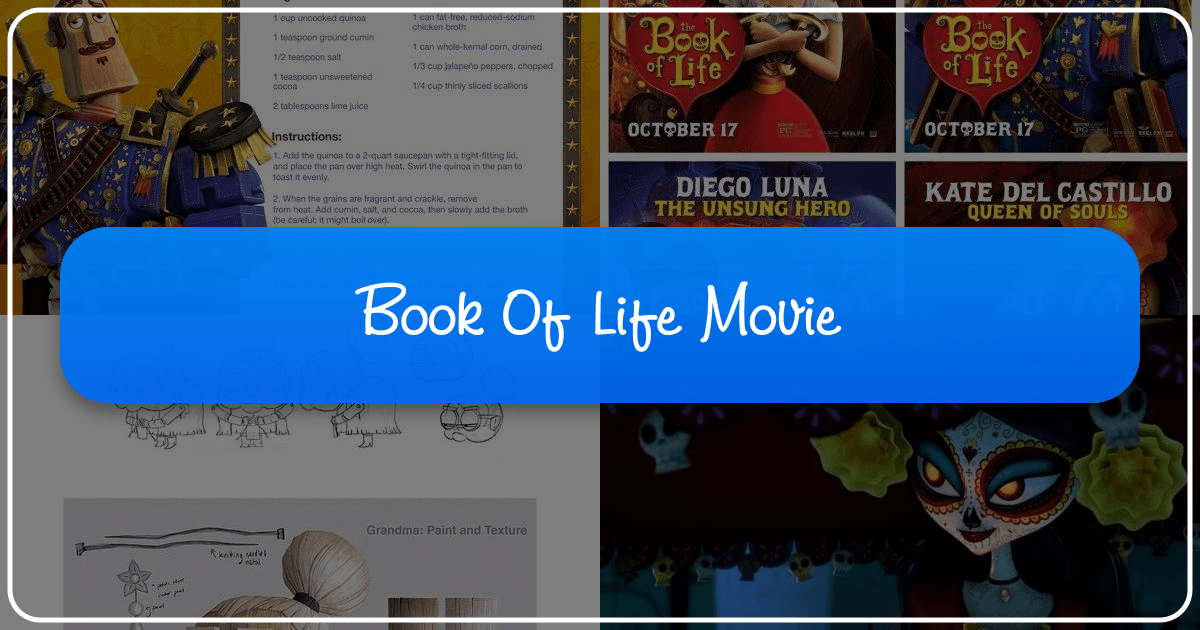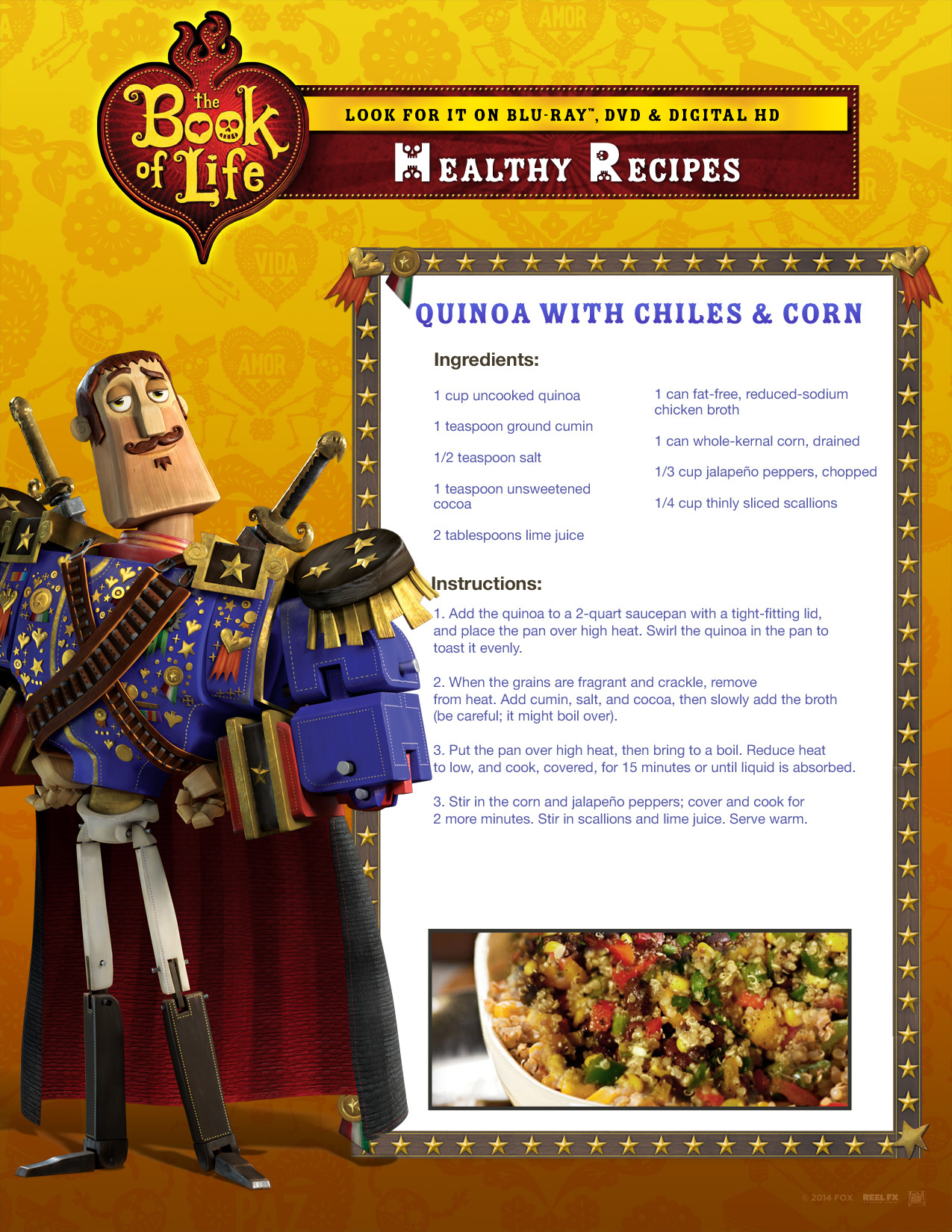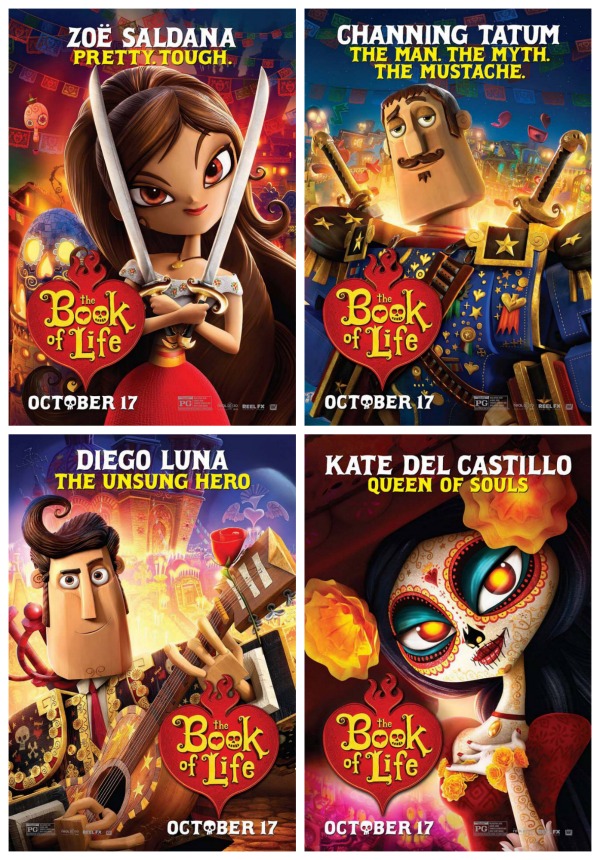The Book of Life: A Cinematic Exploration of Life, Death, and Cultural Identity

The 2014 animated film “The Book of Life” transcends the typical animated fare, offering a vibrant and culturally rich tapestry woven from Mexican folklore, the Day of the Dead traditions, and universal themes of love, family, and legacy. This article delves into the film’s narrative, production, reception, and cultural impact, exploring its resonance within the broader context of literature, animation, and cultural representation. We will analyze the movie through the lens of several key topics: books, authors, reading and learning, libraries, and cultural impact, enriching our understanding of its enduring appeal.
The Narrative: A Story Within a Story

“The Book of Life” unfolds as a meta-narrative, embedding a fantastical tale within a contemporary setting. A museum tour guide, revealed later to be La Muerte (Kate del Castillo), recounts the legend of San Angel, a Mexican town brimming with life and steeped in tradition. This framing device immediately establishes the film’s playful engagement with storytelling itself, highlighting the power of narratives to shape our understanding of life and death.
The central narrative revolves around a love triangle between Manolo (Diego Luna), Joaquín (Channing Tatum), and María (Zoe Saldana), three childhood friends whose paths diverge as they mature. Manolo, a gentle soul with a passion for music, grapples with his family’s legacy of bullfighting, while Joaquín, ambitious and driven, embraces the military life. María, independent and spirited, finds herself caught between their affections.

Their destinies become entangled with a wager between La Muerte and Xibalba (Ron Perlman), the rulers of the Land of the Remembered and the Land of the Forgotten, respectively. The gods bet on who María will choose to marry, with the outcome determining the balance of power between their realms. Xibalba’s interference, however, throws a wrench in the works, adding layers of complexity and suspense to the narrative.
The film’s exploration of the Day of the Dead is central to its themes. This vibrant celebration of life and remembrance becomes the backdrop for Manolo’s journey through the Land of the Remembered, where he encounters his deceased family and confronts his fears. The Land of the Forgotten, in stark contrast, serves as a visual representation of the consequences of unfulfilled lives and forgotten legacies.
Manolo’s journey is not merely a quest for María’s love; it’s a profound exploration of self-discovery and the acceptance of one’s true self. He overcomes his fear of not living up to expectations, embracing his passion for music and ultimately rewriting his own story within “The Book of Life” itself. The film’s conclusion emphasizes the cyclical nature of life and death, the importance of remembering loved ones, and the power of individual choices to shape one’s destiny.

Books: Genres, Themes, and Storytelling
The film’s very title, “The Book of Life,” points to the central role of storytelling in shaping our lives. The film itself functions as a kind of “book,” employing various literary techniques to engage the audience.
The genre of the film blends animation with fantasy, adventure, comedy, and musical elements. It’s a “book” with multiple chapters, each with its own distinct mood and tone. The narrative structure, with its nested stories and framing device, echoes the techniques found in many literary works, from novels to folktales.
The film’s themes are rich and multilayered, reflecting the diverse genres it incorporates. These include the exploration of cultural identity, the importance of family traditions, the struggle for self-discovery, the acceptance of death as part of life, and the enduring power of love and friendship. These themes resonate across numerous literary genres, demonstrating the film’s universality.
Authors: Jorge R. Gutierrez and Guillermo del Toro
The creative vision of Jorge R. Gutierrez, the film’s director and co-writer, is evident in every frame. His distinctive animation style, influenced by Mexican folk art, lends a unique visual identity to the film. His personal experiences and cultural background deeply informed the storytelling, creating a narrative that feels both authentic and universally relatable.
Guillermo del Toro’s contribution as a producer is equally significant. His influence is apparent in the film’s blend of fantasy and dark humor, its exploration of complex emotional themes, and its visually stunning aesthetic. Del Toro’s own fascination with folklore and mythology shaped the film’s rich visual world and underlying thematic concerns. The collaborative effort between Gutierrez and del Toro created a film that is both visually arresting and thematically resonant.
Reading and Learning: Educational Value and Life Lessons
“The Book of Life” offers significant educational value, serving as an engaging introduction to Mexican culture and the Day of the Dead traditions. The film’s vibrant visuals, engaging characters, and compelling narrative make it an accessible and enjoyable learning experience for audiences of all ages.
The film also provides valuable life lessons, emphasizing the importance of staying true to oneself, pursuing one’s passions, and cherishing family and friends. The characters’ journeys of self-discovery, conflict resolution, and reconciliation offer profound insights into human relationships and the complexities of life. The exploration of mortality and remembrance encourages reflection on the value of life and the importance of cherishing memories.
Libraries: Preserving Cultural Heritage
The museum setting, with its “Book of Life” exhibit, acts as a symbolic library, preserving and showcasing cultural heritage. The film underscores the significance of preserving cultural traditions and stories for future generations. The film implicitly suggests the importance of libraries—physical and digital—in maintaining access to diverse narratives and fostering cultural understanding. The “Book of Life” itself functions as a metaphorical archive, containing countless stories, each reflecting a unique human experience.
Cultural Impact: Literary Influence, Adaptations, and Awards
“The Book of Life” has had a noteworthy cultural impact, particularly in its representation of Mexican culture and traditions. The film’s success has stimulated conversations around cultural representation in animation and broadened appreciation for Mexican folklore.
The film has garnered critical acclaim, earning a Golden Globe nomination for Best Animated Feature Film and receiving recognition at the Annie Awards for its character design. Its visual style and unique storytelling approach have influenced subsequent animated films, inspiring creators to explore diverse cultural narratives and innovative animation techniques.
The film’s use of music further contributes to its cultural impact. The incorporation of both original songs and covers of popular songs adds another layer to the storytelling, enhancing the film’s emotional resonance and its ability to connect with a wider audience. This careful integration of music showcases the power of music to evoke emotions and transcend cultural boundaries.
In conclusion, “The Book of Life” is far more than just a children’s animated film; it’s a vibrant and thoughtful exploration of life, death, and cultural identity. Its narrative structure, artistic style, and thematic depth resonate across diverse disciplines, from literature and animation to cultural studies and education, showcasing the power of storytelling to inspire, educate, and foster cross-cultural understanding. The film’s enduring appeal stems from its ability to blend universal themes with specific cultural richness, creating a cinematic experience that is both entertaining and profoundly moving.